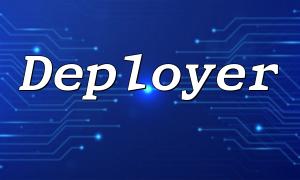How to Develop an E-Commerce Website Using PHP and CGI
As the internet rapidly evolves, e-commerce websites have become an integral part of modern business activities. PHP and CGI, as popular web development languages, are widely used in the development of e-commerce platforms. This article will introduce how to use PHP and CGI to develop an e-commerce website and provide some practical code examples.
1. Preparation
Before starting development, you need to ensure that the required software environment is correctly installed and configured. The following steps outline the process:
1.1 Installing Apache Web Server
When developing a PHP and CGI-based website, you first need a web server. Apache is a widely-used open-source web server. You can download it from its official website and follow the installation instructions.
1.2 Installing PHP
PHP is a general-purpose scripting language suitable for web development. You can download the latest version of PHP from its official website and install it.
1.3 Installing CGI
CGI (Common Gateway Interface) is a standard for defining the communication between a web server and external applications. It can be used to handle form submissions, control page redirections, and more. CGI functionality can be added by installing the necessary libraries or plugins. Detailed installation steps are available in the official documentation.
2. Building the E-Commerce Website
Once the preparation work is complete, you can begin creating the e-commerce website. The following are common steps involved in the development process:
2.1 Designing the Database
The core of an e-commerce website is the database, which stores product information, user details, etc. You can use MySQL or other relational databases for development. The first step is to design the database structure and create the necessary tables.
2.2 Connecting to the Database
In PHP, you can use the mysqli or PDO libraries to connect to a database and execute SQL queries. Below is an example of how to connect to a MySQL database:
<?php
$servername = "localhost";
$username = "username";
$password = "password";
$dbname = "database";
// Create connection
$conn = new mysqli($servername, $username, $password, $dbname);
// Check connection
if ($conn->connect_error) {
die("Connection failed: " . $conn->connect_error);
}
echo "Connected successfully";
?>
2.3 Writing Business Logic
Based on the e-commerce website's functional requirements, you will need to write various business logic. For example, adding products to the shopping cart, querying order information, and more. Here's an example of a simple query to retrieve product information:
<?php
$sql = "SELECT * FROM products";
$result = $conn->query($sql);
if ($result->num_rows > 0) {
// Output data of each row
while($row = $result->fetch_assoc()) {
echo "Product ID: " . $row["id"]. " - Product Name: " . $row["name"]. " - Product Price: " . $row["price"] . "<br>";
}
} else {
echo "0 results";
}
$conn->close();
?>
2.4 Handling Form Submissions
In an e-commerce site, users typically fill out forms for registration, login, or order placement. CGI can be used to process these form submissions, validate inputs, and perform necessary actions. Below is an example of a registration form:
<?php
if ($_SERVER["REQUEST_METHOD"] == "POST") {
$name = $_POST['name'];
$email = $_POST['email'];
$password = $_POST['password'];
// Validate and process user input
// ...
// Insert data into the database
$sql = "INSERT INTO users (name, email, password) VALUES ('$name', '$email', '$password')";
if ($conn->query($sql) === TRUE) {
echo "Registration successful";
} else {
echo "Error: " . $sql . "<br>" . $conn->error;
}
}
$conn->close();
?>
2.5 Front-End Design
To enhance the user experience, you will need to design and develop the front-end interface of the website. You can use HTML, CSS, and JavaScript for this purpose. Additionally, PHP can dynamically generate HTML pages using template engines.
3. Testing and Deployment
After completing the development, testing and deployment are crucial. You can simulate user interactions in a local environment to test the website's functionality and performance. Then, configure the server and deploy the website by transferring the files via FTP or other tools, and set up the necessary database configurations.
Conclusion
Developing an e-commerce website using PHP and CGI allows for rich functionality, interactivity, and scalability. Developers can leverage these technologies to build websites that meet user needs while offering flexibility and ease of maintenance.
This article provided an overview of how to develop an e-commerce website using PHP and CGI, along with some useful code examples. We hope it helps you in your development journey!









